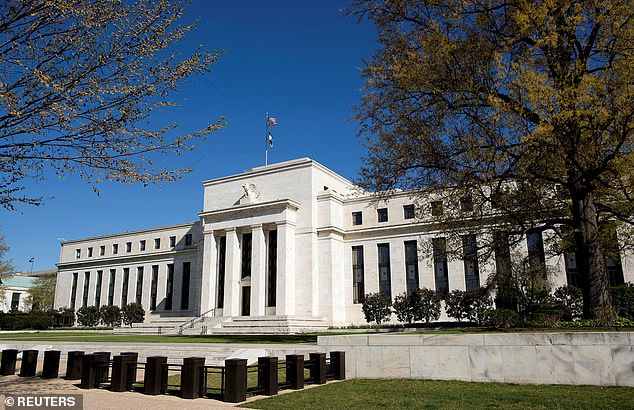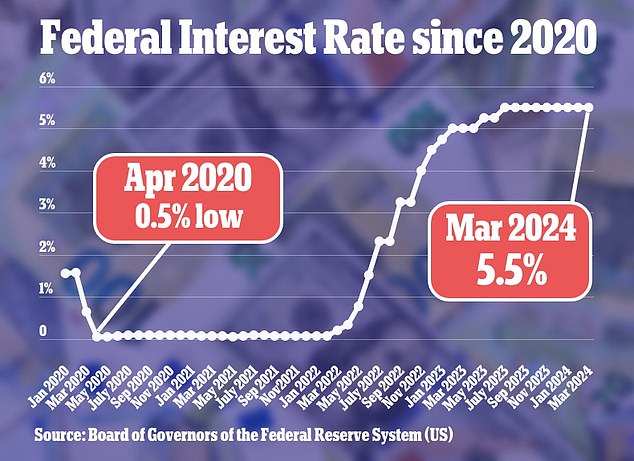Federal Reserve posts record $114.3 BILLION loss in 2023 after soaring interest rates upended the body’s finances
The Federal Reserve posted a record loss of $114.3 billion in 2023 as it struggled to meet its short-term interest rate target.
Last year’s loss came after net income of $58.8 billion in 2022, the agency said.
Officials have repeatedly emphasized that net negative incomes do not hinder the country’s ability to implement or conduct monetary policy as usual.
It comes after the Fed again opted to keep interest rates steady at their current 23-year high at its March meeting.
The Fed’s benchmark interest rate – which has a knock-on effect on mortgages and credit card loans – will remain at its current level of between 5.25 and 5.5 percent, where it has been since last July.
In addition to the decision, policymakers had planned a three-quarter percentage point cut by the end of the year.
The Federal Reserve posted a record loss of $114.3 billion in 2023 as it struggled to meet its short-term interest rate target. Pictured: Fed Chairman Jerome Powell at the body’s meeting in March

Last year’s loss came after net income of $58.8 billion in 2022, the Fed said.
The released figures were an audited count following preliminary figures reported earlier this year.
By law, the Fed transfers any profits, after covering operating costs, to the Treasury Department.
The Fed earns income from services it provides to the financial system and from interest income on securities it owns.
The country has made significant gains in recent years in a context of very low interest rates and large amounts of bonds.
The Fed’s move to aggressively raise the Federal Funds Rate starting in the spring of 2022 has upended central bank finances.
To cool inflationary pressures, the Fed has raised its target from a near-zero level to the current range of 5.25% to 5.5%.
The Fed enforces this goal by paying banks, money funds, and other financial companies to park cash at the central bank, which means paying significantly more interest.
Fed-monitored interest expense on banks’ reserves last year was $176.8 billion, up $116.4 billion from 2022 levels, while interest payments from the reverse repo facility were $104.3 billion last year compared to $41.9 billion the year before.
Meanwhile, the Fed’s income from bonds it holds was $163.8 billion last year, little changed from 2022.

The Federal Reserve voted today for the fifth consecutive meeting to keep interest rates steady, but indicated it will stick to plans to cut rates several times this year
The Fed can create money to finance its activities when it faces operating losses, meaning it faces no obstacles to operating. It records the loss in an accounting device called a deferred asset.
The official level of deferred assets at the end of 2023 was $133.3 billion. By March 20, this had risen to $157.8 billion and it is unclear how much larger this will become.
When the Fed returns to profitability, it will use the excess profits to reduce deferred assets, and when it is lifted, the Fed will return the excess profits to the Treasury.
Fed officials have noted that they have returned significant amounts of money to the Treasury Department in recent years.
A St. Louis Fed report last year said it could take years before the Fed can return profits to the government.
